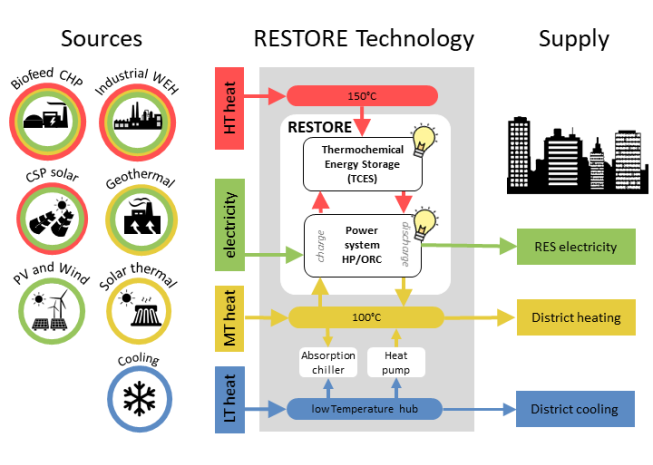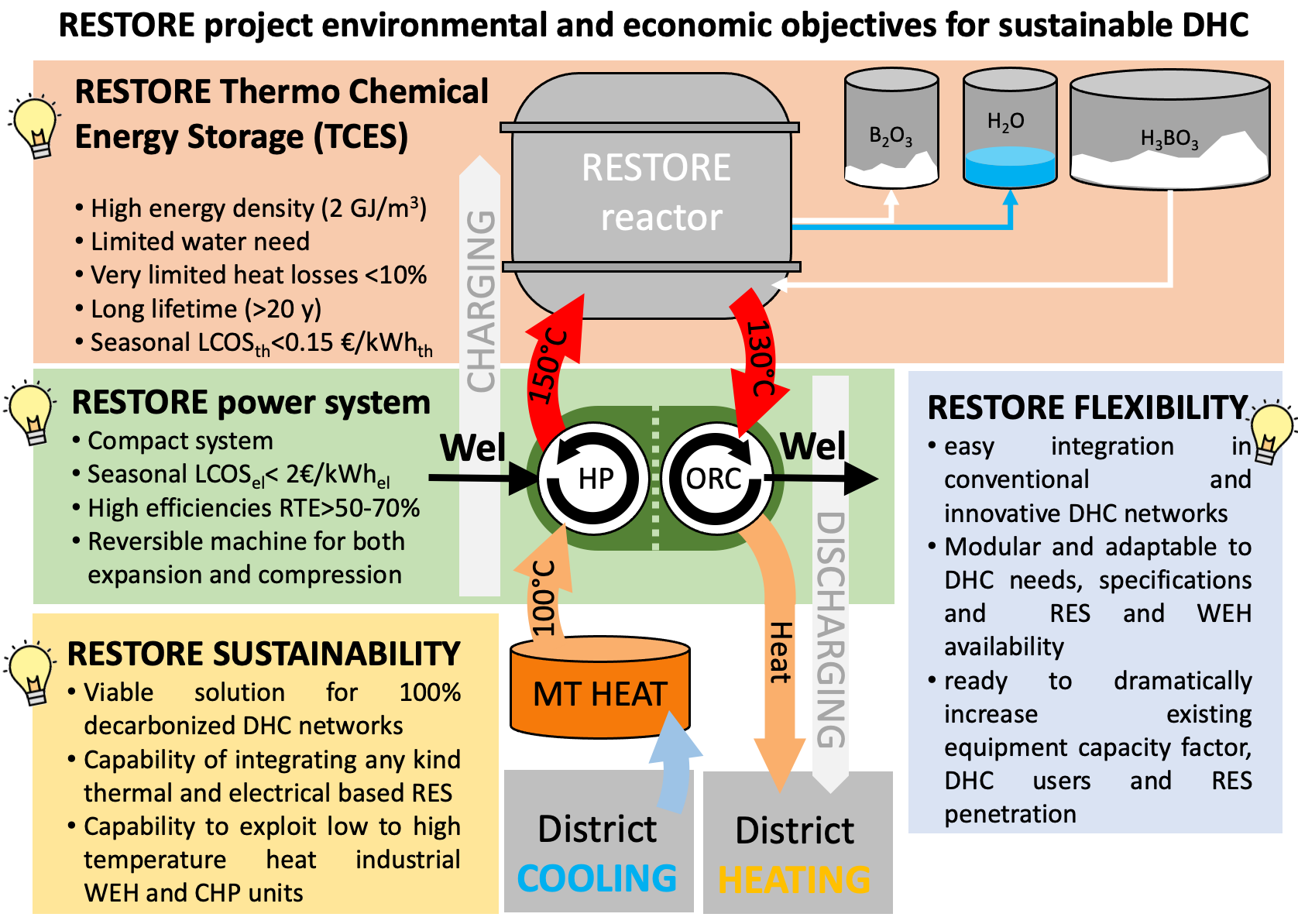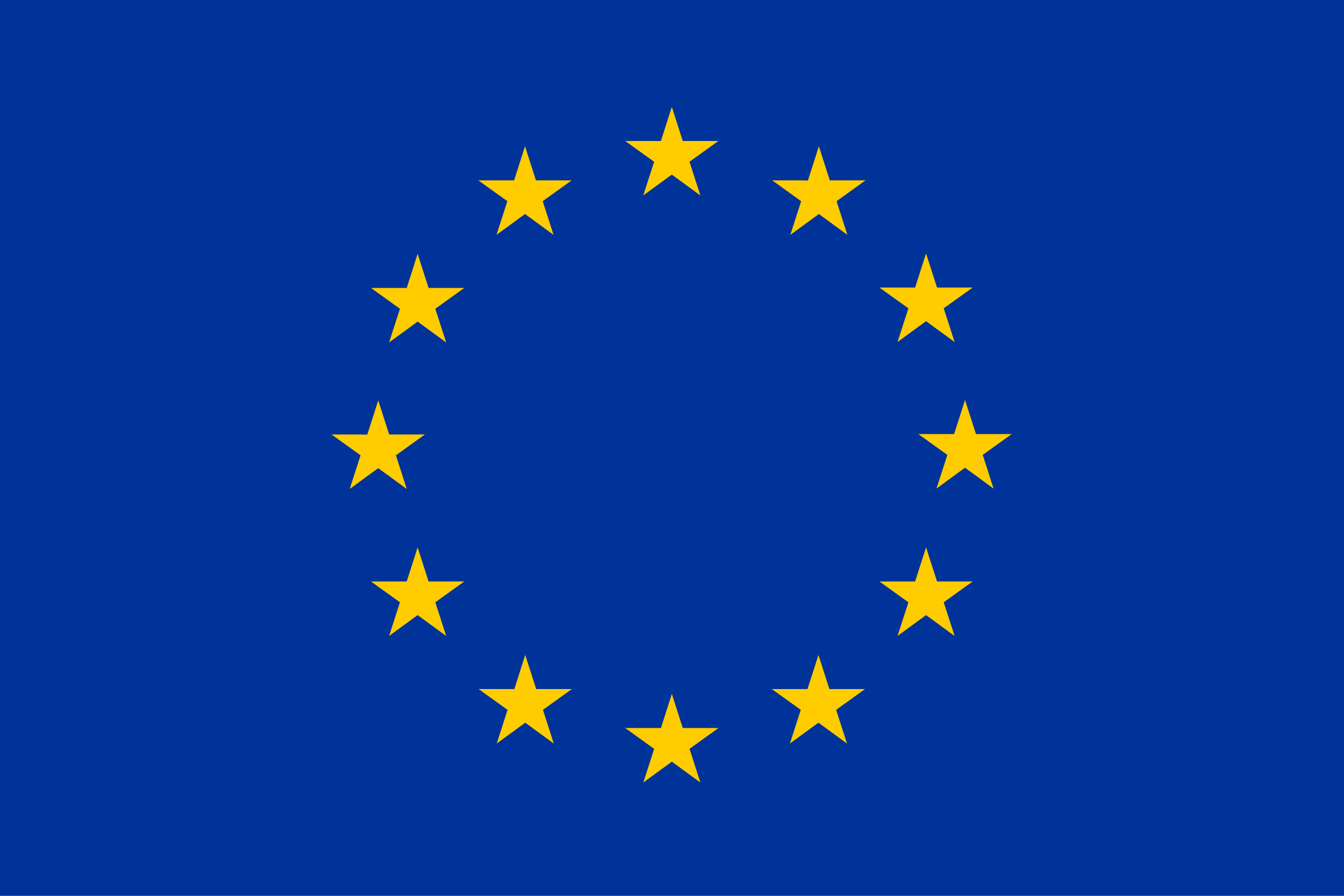RESTORE – Renewable Energy based seasonal Storage Technology in Order to Raise Economic and environmental sustainability of DHC – proposes a radically innovative solution for decarbonising the heating and cooling sector, based on the combination of two key innovative technologies. The concept allows integrating a wide variety of Renewable Energy Sources (RES) combined with competitive seasonal storage in District Heating and Cooling (DHC) networks, enabling them to be 100% renewable to radically improve their environmental sustainability.
Two key innovative technologies
The first technology the project aims to develop is an innovative thermal energy storage system using heat from chemical reactions, the Thermochemical Energy Storage (TCES). It provides daily and seasonal competitive energy storage due to its high energy density, very low energy losses and its low-cost. The system represents a key development due to the fact that it allows harnessing the enormous amount of energy that is normally wasted due to the mismatch between energy demand (loads) and energy generation (related to the availability of the renewable resource or waste heat), mainly occurring between seasons.
In addition, the project aims to develop a second technology, namely a reversible Heat Pump (HP) /Organic Rankine Cycle (ORC) and to combine it with the TCES system. This second technology adapts the energy from different Renewable Energy Sources to feed the storage system. This allows for integrating a wide variety of renewable technologies as well as waste heat into the whole system to finally supply the energy demand under the specific conditions laid down by each District Heating network.
A promising solution for decarbonising heating and cooling
This radically innovative solution would tackle the main barriers for a wide deployment of renewable energy technologies and waste heat in the existing and future DHC networks. The project considers the experimental validation of the RESTORE concept and also the demonstration of the concept replicability potential, adapting and optimizing the proposed solution to different real sites (different network conditions and local particularities as the available renewable technologies/waste heat) spread over the EU, and quantifying its potential benefits via Virtual Use-Cases.



